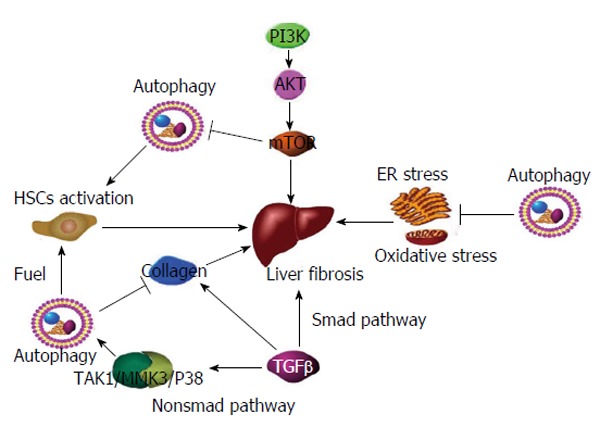Figure 1.

Mechanisms involved in autophagy and fibrosis. (1) Phosphoinositide 3-kinase promotes phosphorylation of AKT, which subsequently leads to stimulation of mTOR and inhibition of autophagy. mTOR activation promotes hepatic fibrosis; (2) Autophagy fuels HSC activation, leading to hepatic fibrosis; (3) TGF-β promotes collagen synthesis and fibrosis via the Smad pathway. Furthermore, TGF-β stimulates autophagy via the non-Smad TAK1/MMK3/P38 pathway, leading to collagen degradation and fibrosis reduction; and (4) Autophagy attenuating ER stress and oxidative stress, and ultimately reduces fibrosis. mTOR: Mammalian target of rapamycin; HSC: Hepatic stellate cells; TGF-β: Transforming growth factor-β; TAK1/MMK3/P38: TGF-β-activated kinase 1-MAPK kinase 3-p38.
